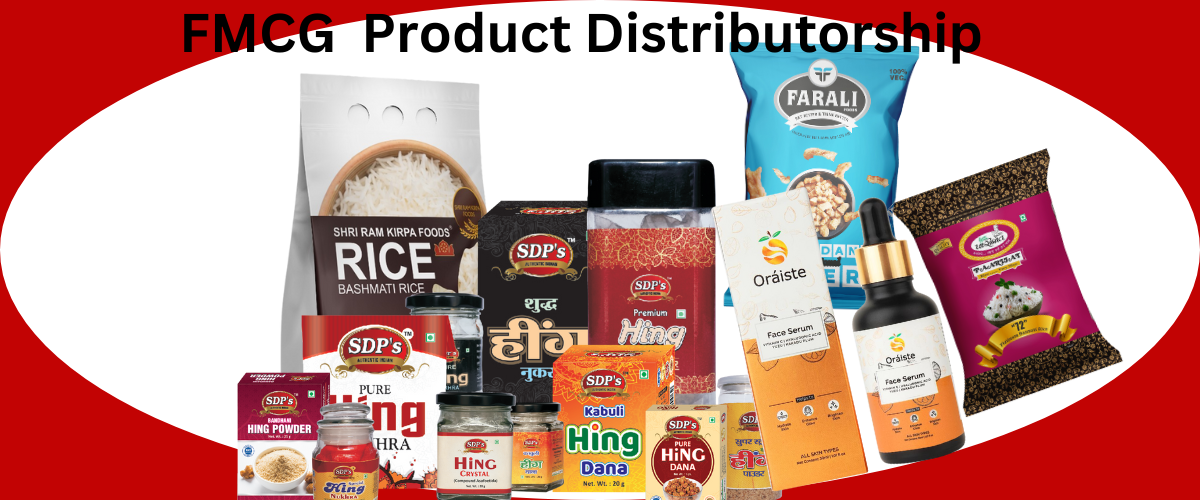The Fast-Moving Consumer Goods (FMCG) sector is one of the most dynamic and competitive industries in the world. FMCG products include essential items like food and beverages, personal care products, household goods, and over-the-counter medicines. These products are characterized by their short shelf life and high turnover rate. In such a fast-paced industry, efficient distribution is critical to ensure that products are available to consumers when and where they need them. This blog explores the vital role of distribution in the FMCG sector, highlighting its significance, challenges, and strategies for success.
Understanding FMCG Distribution
Distribution in the FMCG sector involves the movement of goods from manufacturers to consumers. This process includes several key stages:
- Manufacturing: Production of FMCG products in factories.
- Warehousing: Storage of finished goods in warehouses before they are dispatched.
- Transportation: Movement of goods from warehouses to distribution centers, retail stores, or directly to consumers.
- Retailing: Selling products to the end consumer through various retail channels such as supermarkets, convenience stores, online platforms, and local shops.
Effective distribution ensures that products are available at the right place, at the right time, and in the right quantities, which is crucial for meeting consumer demand and maintaining competitiveness in the market.
Significance of Distribution in the FMCG Sector
- Ensures Product Availability: One of the primary roles of distribution is to ensure that FMCG products are readily available to consumers. In a highly competitive market, product availability can be a key differentiator. An efficient distribution network helps prevent stockouts and ensures that retailers have a consistent supply of products.
- Reduces Lead Time: Speed is of the essence in the FMCG sector. Efficient distribution reduces the time taken for products to move from manufacturers to retailers, ensuring that fresh products reach consumers quickly. This is particularly important for perishable goods like food and beverages.
- Enhances Market Reach: A robust distribution network allows FMCG companies to expand their market reach. By establishing distribution channels in different regions, companies can penetrate new markets and increase their customer base. This is especially important in a diverse and geographically vast country like India.
- Cost Efficiency: Effective distribution can lead to significant cost savings. By optimizing transportation routes, managing inventory efficiently, and reducing wastage, companies can lower their operational costs. This, in turn, can lead to competitive pricing and higher profit margins.
- Improves Customer Satisfaction: Timely and reliable delivery of products enhances customer satisfaction. When consumers can consistently find their preferred products on store shelves, it builds trust and loyalty. Satisfied customers are more likely to make repeat purchases and recommend the brand to others.
Key Challenges in FMCG Distribution
- Complex Supply Chains: The FMCG sector often deals with complex supply chains involving multiple intermediaries, including wholesalers, distributors, and retailers. Coordinating and managing these stakeholders can be challenging.
- Infrastructure Issues: In many regions, inadequate infrastructure can hinder efficient distribution. Poor road conditions, lack of storage facilities, and unreliable transportation networks can lead to delays and increased costs.
- Inventory Management: Balancing inventory levels is crucial in the FMCG sector. Overstocking can lead to wastage, especially for perishable goods, while understocking can result in lost sales. Accurate demand forecasting and inventory management are essential to overcome this challenge.
- Regulatory Compliance: FMCG companies must comply with various regulations related to safety, labeling, and transportation. Navigating these regulatory requirements can be complex and time-consuming.
- Technological Integration: Integrating advanced technologies such as data analytics, automation, and tracking systems into the distribution process can be challenging, especially for smaller companies with limited resources.
Strategies for Effective Distribution in FMCG
- Optimizing Distribution Networks: FMCG companies should continuously evaluate and optimize their distribution networks. This involves selecting the most efficient transportation routes, strategically locating warehouses and distribution centers, and minimizing the distance between manufacturing units and retail outlets.
- Leveraging Technology: Embracing technology can significantly enhance distribution efficiency. For example, using data analytics can help companies forecast demand more accurately, optimize inventory levels, and identify potential bottlenecks in the supply chain. Automation and real-time tracking systems can streamline operations and provide better visibility into the distribution process.
- Collaborating with Partners: Building strong relationships with distributors, wholesalers, and retailers is crucial for smooth distribution. Collaborative partnerships can help align goals, share information, and resolve issues quickly. Regular communication and joint planning can lead to more efficient and effective distribution.
- Investing in Infrastructure: Companies should invest in improving their infrastructure, including warehousing facilities, transportation fleets, and IT systems. Modernizing infrastructure can enhance the speed and reliability of distribution, reduce costs, and improve overall efficiency.
- Sustainability Initiatives: Implementing sustainable practices in distribution can benefit both the environment and the company’s bottom line. This includes optimizing routes to reduce fuel consumption, using eco-friendly packaging materials, and minimizing waste. Consumers are increasingly conscious of environmental issues, and sustainability can be a key differentiator for FMCG companies.
- Training and Development: Providing regular training to employees involved in the distribution process can improve their efficiency and effectiveness. Training programs should cover areas such as inventory management, technology usage, and customer service. Well-trained employees are better equipped to handle challenges and ensure smooth distribution operations.
- Adapting to Market Changes: The FMCG sector is dynamic, with consumer preferences and market conditions constantly evolving. Companies must stay agile and adapt their distribution strategies to meet changing demands. This may involve expanding distribution networks, diversifying product offerings, or adopting new technologies.
Future Trends in FMCG Distribution
- E-commerce Integration: The rise of e-commerce has transformed the FMCG sector. Companies are increasingly integrating online sales platforms with their distribution networks to reach a broader audience. This trend is expected to continue, with more consumers preferring the convenience of online shopping.
- Last-Mile Delivery Innovations: Last-mile delivery, the final step in the distribution process, is becoming a critical focus area. Innovations such as drone deliveries, autonomous vehicles, and local delivery hubs are being explored to enhance last-mile efficiency and reduce costs.
- Data-Driven Decision-Making: The use of big data and analytics is revolutionizing the FMCG sector. Companies are leveraging data to gain insights into consumer behavior, optimize supply chains, and improve demand forecasting. Data-driven decision making is expected to play a significant role in the future of FMCG distribution.
- Sustainable Practices: Sustainability will continue to be a key trend in FMCG distribution. Companies are adopting green logistics practices, reducing carbon footprints, and implementing circular economy principles. Consumers are increasingly valuing environmentally responsible brands, and sustainability can drive customer loyalty and brand differentiation.
- Omnichannel Distribution: The line between online and offline sales channels is blurring. Omnichannel distribution, which integrates various sales channels to provide a seamless shopping experience, is gaining traction. FMCG companies are focusing on creating cohesive and consistent customer experiences across multiple touchpoints.
Conclusion
Distribution plays a pivotal role in the success of the FMCG sector. Efficient distribution networks ensure product availability, reduce lead times, enhance market reach, and improve customer satisfaction. However, managing distribution in the FMCG sector comes with its own set of challenges, including complex supply chains, infrastructure issues, and regulatory compliance. By leveraging technology, optimizing networks, collaborating with partners, and adopting sustainable practices, FMCG companies can overcome these challenges and thrive in a competitive market. As the industry continues to evolve, staying agile and adapting to emerging trends will be crucial for maintaining a competitive edge and driving growth.







